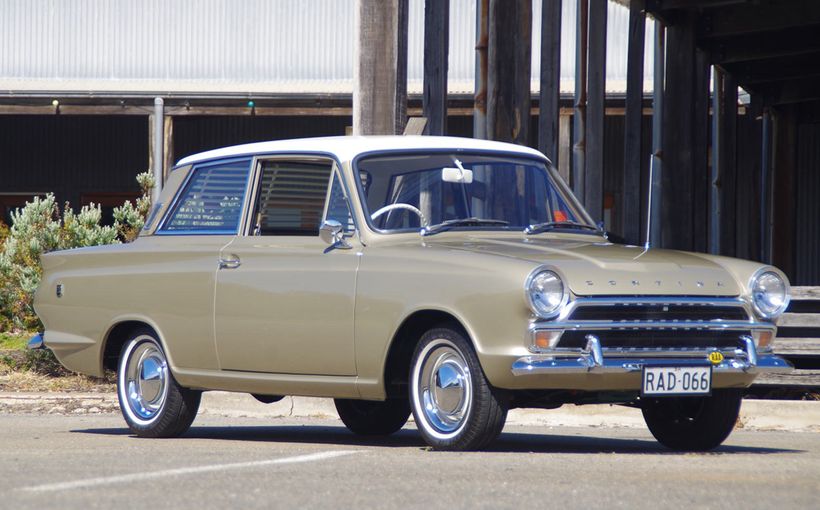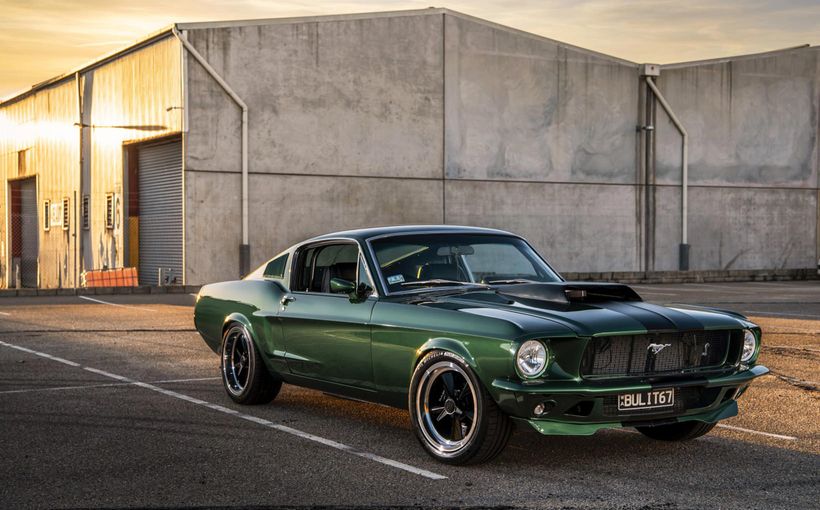XW Falcon: American genius creates the Super Roo

The facelift that transformed the XT Falcon into its XW successor must surely be judged one of the Australian automotive industry’s most successful. The XW made its debut in July 1969 on to streets prowled by Jaguar’s extraordinary new XJ6, and where the HT Holden with its new plastic grille and the Valiant Pacer – in a palette of vivid hues – represented the home market.
I remember July 1969 well. It was the same month as Neil Armstrong’s moonwalk. The Beatles had matured, marching their upbeat music up and down Abbey Road. Flower Power was the coming thing and I even had a stick-on flower on the back of my Mosman Blue FJ Special. Male hair got cut less often. Highlights of my motoring day included seeing a sky blue XJ or a light metallic green XW Fairmont on my morning walk through Carlton on the way to uni.

What was so clever about the facelift was that Ford Australia’s designers had endowed the Falcon – in its first nine years a car known for its gentle curves – with a new, tougher demeanour. The XW looked not so much like a reworked XR/XT as an all-new car: squarer (in appearance not character!), more assertive, more powerful, a sleek machine for the forthcoming decade, and we could be talking about the entry level variant!
The grille was cleaner than the XT’s and the wraparound front parking lights and indicators were in advance of most rivals. The rear, too, had been toughened up and for the first time the taillights were not round. The rear window was recessed. The boot lid was a new pressing and reversing was made easier by the fact you could actually see where the car finished.
Whether you were following one or one was in your mirror, the XW looked very different from any of its predecessors. The same treatment was applied where applicable to the wagon, utility and van variants.

Neither Holden nor Chrysler had been able to freshen up a three year-old design to this extent. This was in Bill Bourke’s heyday, when Ford Australia had its rivals covered in marketing, and often in engineering. His was a contribution which has been more evident in hindsight than at the time. Even so, you can hear the respect the writer of this piece had for Bourke. It was Modern Motor’s introductory story on the XW range, published in the August 1969 edition:
If Mr Bill Bourke has his way, Ford will be Australia’s leading motor car manufacturer by the mid-’70s.
Mr Bourke is the Ford Motor Co’s smooth managing director. His buoyant confidence in staff and product more-or-less convinced the Australian motoring press – assembled in Melbourne recently – for the announcement of the Falcon XW – that Ford may well one day lead in the market place…
Mr Bourke pointed out during a press conference which he dominated brilliantly with his grasp of the facts and quick tongue that even Ford dealers were surprised at the extent of the changes wrought in the Falcon for 1969.
Compare the XW with its HT rival. Even at launch in the summer of 1968 the HK had not looked as integrated as the XR/XT, while the HT facelift was a trivial affair that arguably looked less attractive – like so many facelifts – than the original. The Falcon, even in standard guise with a 3.1-litre six and three-on-the-tree, looked smart on Lygon Street and might have turned heads on Abbey Road.

The XW model range was enlarged with the return of the Futura to fill the almost gaping niche between the Falcon 500 and Fairmont. It got the larger 3.6-litre engine with an all-synchromesh three-speeder, albeit one still manipulated by a willowy column shifter. The Futura’s supposedly luxurious features included carpet, heater and a folding armrest in the front bench seat. Pay extra, and you could specify a radio or front disc brakes. It had fancy wheel covers instead of hubcaps.
Here was niche marketing before that term was in currency: Futura slotted not only between 500 and Fairmont but also between Kingswood and Premier. But Bourke decided not to offer the wagon in Futura guise; if the Falcon 500 wouldn’t do, you’d need a Fairmont. This still left plenty of scope: ‘You have a choice of 2 models – Falcon 500 – and Fairmont – each available with a full range of engines, transmissions and other options.’

Then there was the GS, cleverly themed – in a moment of inspiration, almost certainly of Bourke’s – to deliver the sizzle of the new GT without the 351 sausage! The GS got GT-style rally stripes, chromed wheel covers, the GT’s faux wood three-spoke steering wheel and a full set of gauges. It was available only on the sedans and in 1969 few if any customers imagined the ute as Australia’s new sports car. But the GS option was available on the XY ute, foreshadowing the late 1990s when Falcon XR8 and Commodore SS utes brought new glamour to working wheels.
The basic GS pack added just $140 to the price tag. But it was meant to be seen as a beginning:
You take it from there. Add bucket seats and a sports console that houses your choice of 4-speed, all-synchro manual shift or t-bar automatic. Mustang 5-litre 220-horsepower V8, 11-inch Turbo-cooled power disc brakes. Power steering. Air conditioning. Tinted and laminated windscreen. Vinyl roof. Wide-oval tyres that put extra tread on the road, giving your GS an even sportier look.

But far and away the biggest news of the XW lineup was the awesome new 351-engined GT. Nobody could have accused Bill Bourke and his team of hiding this beauty’s light under a bushel. Here was High Noon for Aussie cars, the Ford not only to take Bathurst back from the Monaros but to claim the title of fastest four-door sedan in the world – in HO form, of course.
Looking back, it now seems almost immaterial that the XW failed in its 1969 Bathurst mission (by 44 seconds). The standard GT was unlike any previous Australian car. Bill Bourke’s marketing magic was literally written on its flanks: ‘Super Roo’, ‘High Performance’ and that image of the boxing kangaroo is indelible. Here was Bourke’s giant-killing response to the HK Monaro GTS 327 and its gestation even pre-dates that super coupe.
Holden’s own marketing whizzkid, John (‘Bags’) Bagshaw had phoned a friend in America to get the Chevrolet 327 V8 to out-muscle the 302 Falcon GT. Briefly, the General out-trumped Henry, but Bourke went one better with the 351. According to him, many colleagues thought he was crazy when he appended the GT moniker to a four-door sedan in 1967. What, then, would those same fellow executives Stateside have made of the XW Falcon GT, with its colour chart including Vermilion Fire and those lurid decals?
Those front disc brakes, lavishly described in the brochure as ‘turbo-cooled’, had been significantly upgraded for the XW, mainly to do duty in series production racing and especially at Mount Panorama. They were 11.25 inches in diameter rather than 10, and ventilated. The cheapest Falcon with this system fitted as standard was the Fairmont. But Holden buyers would have to wait until July 1971 and the HQ to buy a comparable configuration. No question, Falcons thus equipped were among the best-braked cars on the roads of 1969, regardless of price. It was a clear example of racing improving the breed.

Just one month after the XW was released, Ford Australia announced the HO version. The initials stood for Handling Options. Strictly speaking, the GTHO was not a car but an options package on the standard GT. It offered fabulous value at $295! For this, racers and would-be racers got a new camshaft, alloy inlet manifold, and a Holley 650 cfm (cubic foot of air per minute) carburettor. The compression ratio jumped from 10:1 to 11 (making it even less happy on pump Super!).
That was just under the bonnet (with those ostentatious, charismatic locking pins). The HO pack also ran to a front spoiler, updated front springs, a heavier-duty tailshaft, stiffer anti-roll bar for the front, a bar for the rear (the standard GT having none) and a final drive of 3:1 instead of 3.25, with Conrod Straight mainly in mind.

For the 1970 race and undaunted by failures in 1968 and again in 1969 (seemingly against the odds), Ford Australia introduced the Phase II HO option for 1970. The Cleveland 351 superseded the old Windsor unit. This engine offered about 1,000 extra rpm, at 6,500. There was a 780 Holley, twin-point distributor, a revised close-ratio gearbox and a 9-inch Detroit Locker differential.
Wider finned rear drum brakes were fitted but, apart from removal of the dust shields, the front discs were unchanged.

In the same month that Ford Australian announced its first HO version of the GT came the next Fairlane, the ZC. The high compression 351 engine as fitted to the GT (not the GTHO) was an exciting new option and a Fairlane thus configured was a true grand touring sedan without a direct locally made rival. A ZC thus equipped was unique, because only the lower compression unit was available in the ZD. The keen buyer could even option his ZC 351 Fairlane with the four-speed Top Loader manual gearbox but very few such examples were made.
Like the XW Falcon, the ZC Fairlane (still offered in Custom and 500 variants) was effectively differentiated from its predecessor, especially at the front where the quad headlights were now stacked in the fashion of the mid-’60s Galaxies. Squarer front mudguards, wraparound taillights and what was described in the brochure as ‘a more rakish rear window-line that continues smoothly across the rear-deck’ combined to convey extra street cred. More purposeful still was a 351 badge on the new front guard.
Even the old 302 acquired 10 more horsepower in the switch from XT to XW and ZB to ZC, now making 220. But the 351 had 290!
The Custom came standard with the 3.6-litre sixpack, while the entry level 500 still got the 302.
All ZCs got the brilliant Kelsey-Hayes front discs as seen in the XW Fairmont and GT and on the options list for lesser variants. Bill Bourke’s fingerprints were all over these cars. For the first time on an Australian range American options including integrated air-conditioning, sunroof and the T-bar transmission selector were on offer.
The new Fairlane 351 could run the standing quarter-mile in 16 seconds flat; its only rivals for power were dedicatedly sporting models or the hugely expensive (and complex) Mercedes-Benz 300SEL 6.3.

On a performance and comfort per dollar basis, the Fairlane 500 with the 351 engine option had no peers. Nothing else even came close. If you had to jump in a car for a quick trip from Melbourne to the Gold Coast with five adults on board, no other car except the Mercedes 6.3 – could have done the job better in 1969. It’s fair to say that a 351-equipped Fairlane 500 was to 1969 what the Star Model Customline had been to 1959. And what a distance we had travelled in that decade…
Inside were recessed controls (all XWs got these), a new leather-like style of vinyl as seen first in the Fairmont, thicker seat padding and, for the first time, the option of factory air-conditioning.

In summary, wherever you look in the XW/ZC range you see the evidence of how superior Ford’s Falcon/Fairlane and the marketing of them were to Holden’s in the same era. Following the triumph of the XP Durability Run and the brilliance of the ‘Mustang-bred’ XR Falcon the following year, the XW imprinted a third high point on The Falcon/Fairlane’s steadily rising graph.










